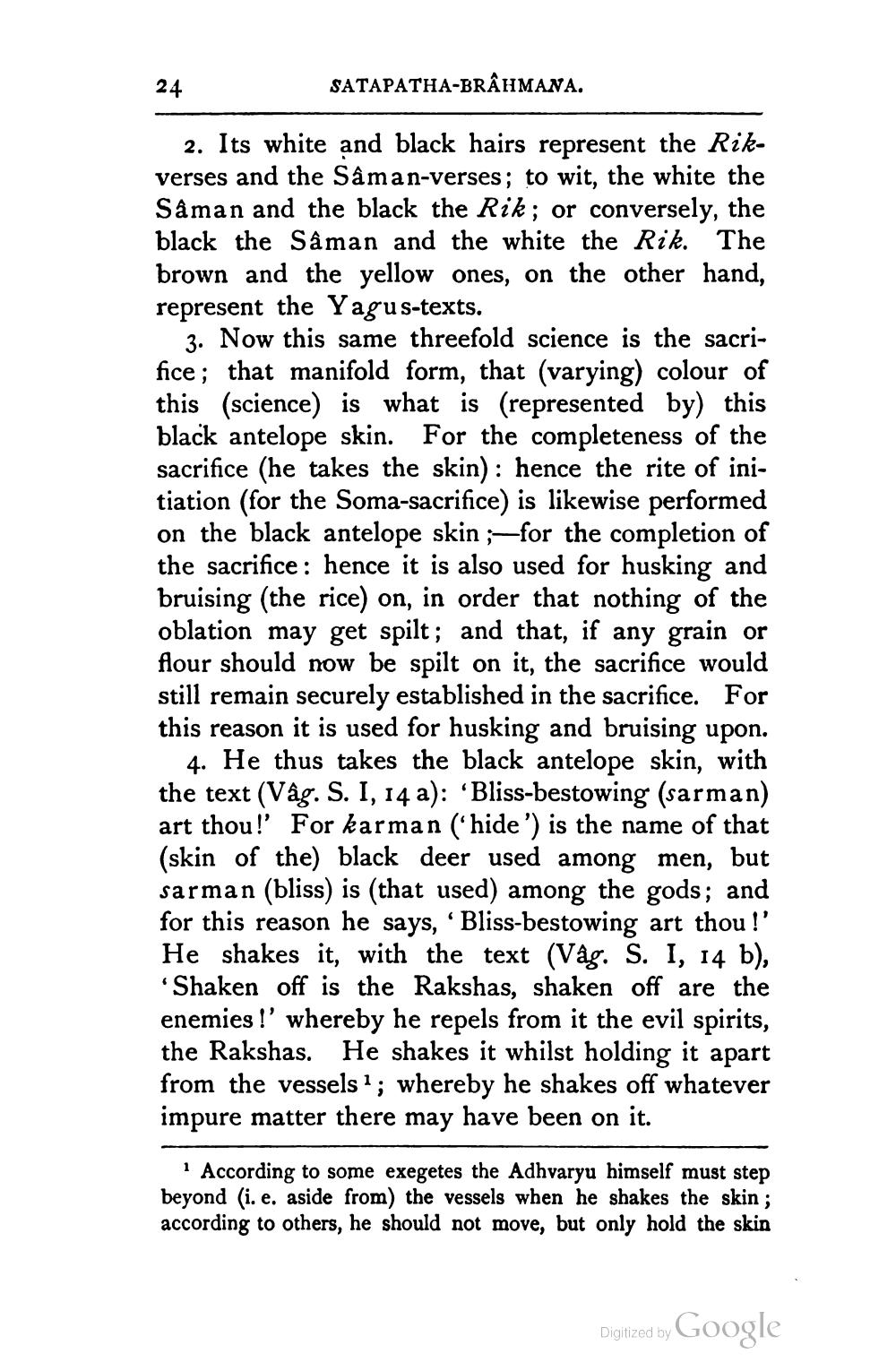________________
24
SATAPATHA-BRAHMANA.
2. Its white and black hairs represent the Rikverses and the Sâman-verses; to wit, the white the Sâman and the black the Rik; or conversely, the black the Sâman and the white the Rik. The brown and the yellow ones, on the other hand, represent the Yagus-texts.
3. Now this same threefold science is the sacrifice; that manifold form, that (varying) colour of this (science) is what is (represented by) this black antelope skin. For the completeness of the sacrifice (he takes the skin): hence the rite of initiation (for the Soma-sacrifice) is likewise performed on the black antelope skin ;-for the completion of the sacrifice: hence it is also used for husking and bruising (the rice) on, in order that nothing of the oblation may get spilt; and that, if any grain or flour should now be spilt on it, the sacrifice would still remain securely established in the sacrifice. For this reason it is used for husking and bruising upon.
4. He thus takes the black antelope skin, with the text (Vâg. S. I, 14 a): 'Bliss-bestowing (sarman) art thou!' For karman (“hide') is the name of that (skin of the) black deer used among men, but sarman (bliss) is (that used) among the gods; and for this reason he says, 'Bliss-bestowing art thou !' He shakes it, with the text (Vâg. S. I, 14 b), 'Shaken off is the Rakshas, shaken off are the enemies !' whereby he repels from it the evil spirits, the Rakshas. He shakes it whilst holding it apart from the vessels 1; whereby he shakes off whatever impure matter there may have been on it.
1 According to some exegetes the Adhvaryu himself must step beyond (i. e. aside from the vessels when he shakes the skin; according to others, he should not move, but only hold the skin
Digitized by Google




